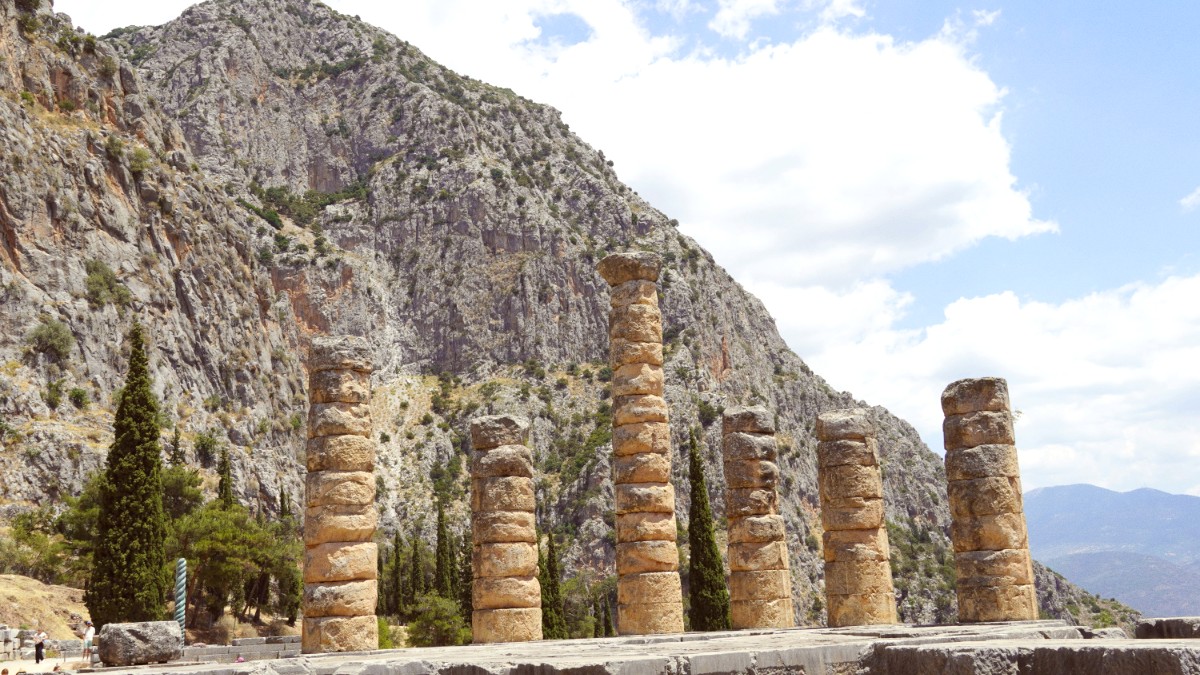
Greece
Accessibility: Site presents challenges for wheelchairs; museum offers ramps/elevators. Bring plenty of water.
The view from the stadium, looking down towards the theater and valley, presents a commanding perspective.
These paths offer excellent, less-frequented panoramas of the site.
Highly photogenic, especially at sunrise or sunset.
Delphi presents important insights into its ancient past through its main museum and smaller cultural centers.
The main museum in Delphi; a must-visit. Houses artifacts from the ancient site, including the Charioteer of Delphi.
A non-profit organization that promotes cultural exchange and research; sometimes hosts exhibitions and events.
Located in the restored house of poet Aggelos Sikelianos, providing insight into the revival of Delphic Festivals.
Located below the main site, featuring the iconic Tholos, two Temples of Athena, and a gymnasium.
A small, active monastery perched on a hillside above Delphi, presenting panoramic valley views.
Several traditional Greek Orthodox churches offer a glimpse into contemporary religious life.
Delphi's dramatic natural setting is as captivating as its ancient ruins, presenting stunning vistas.
This ancient spring, a site of ritual cleansing for the Pythia and pilgrims, provides a peaceful, historically charged spot.
These twin cliffs of Parnassus create the dramatic, imposing backdrop for the Sanctuary of Apollo.
Explore further historical and natural wonders in Delphi and its surroundings.
Beyond the well-trodden paths, Delphi and its immediate vicinity hold some less-visited spots that present unique perspectives.
Explore Delphi's quieter, yet compelling, locales.
Glimpse authentic life and regional evolution.
Incredibly photogenic, especially at sunrise or sunset, when light accentuates its circular structure.
Views looking down the valley towards the Corinthian Gulf present a sweeping landscape shot.
Capture the intricate details of this bronze masterpiece in the Archaeological Museum.
Seek out viewpoints along the main road for classic shots of the village nestled against the mountainside.
Prepare for your visit with practical information.
Consult official sources for the most current information.
The archaeological site poses accessibility challenges for wheelchair users due to its steep, uneven, and stony paths.
The museum, however, is generally accessible with ramps and elevators.
Delphi's allure extends beyond its famous ruins, offering a connection to history and nature.
The site was revered as the "navel of the world" (omphalos) in ancient Greece, hosting Apollo's oracle.
The ancient structures showcase remarkable engineering and artistic skill, adapting to the dramatic landscape.
The site's integration with the landscape is central to its mystique, featuring stunning natural backdrops.
This natural grandeur was considered part of the sacred experience.
The museum complements the archaeological site, demonstrating the wealth of discoveries.
The museum enhances your understanding of ancient Greek art and culture.
The "navel of the world" still conveys a powerful spiritual and historical resonance.
Experience the enduring legacy of this sacred place.
Allocate at least 3-4 hours for the archaeological site and 1-2 hours for the museum for a comprehensive visit.
Photography is permissible for personal use; however, tripods and flash photography may have restrictions in the museum or sensitive areas.
In summer, high temperatures prevail. Bring water, wear sun protection (hat, sunscreen), and plan visits for early morning or late afternoon.